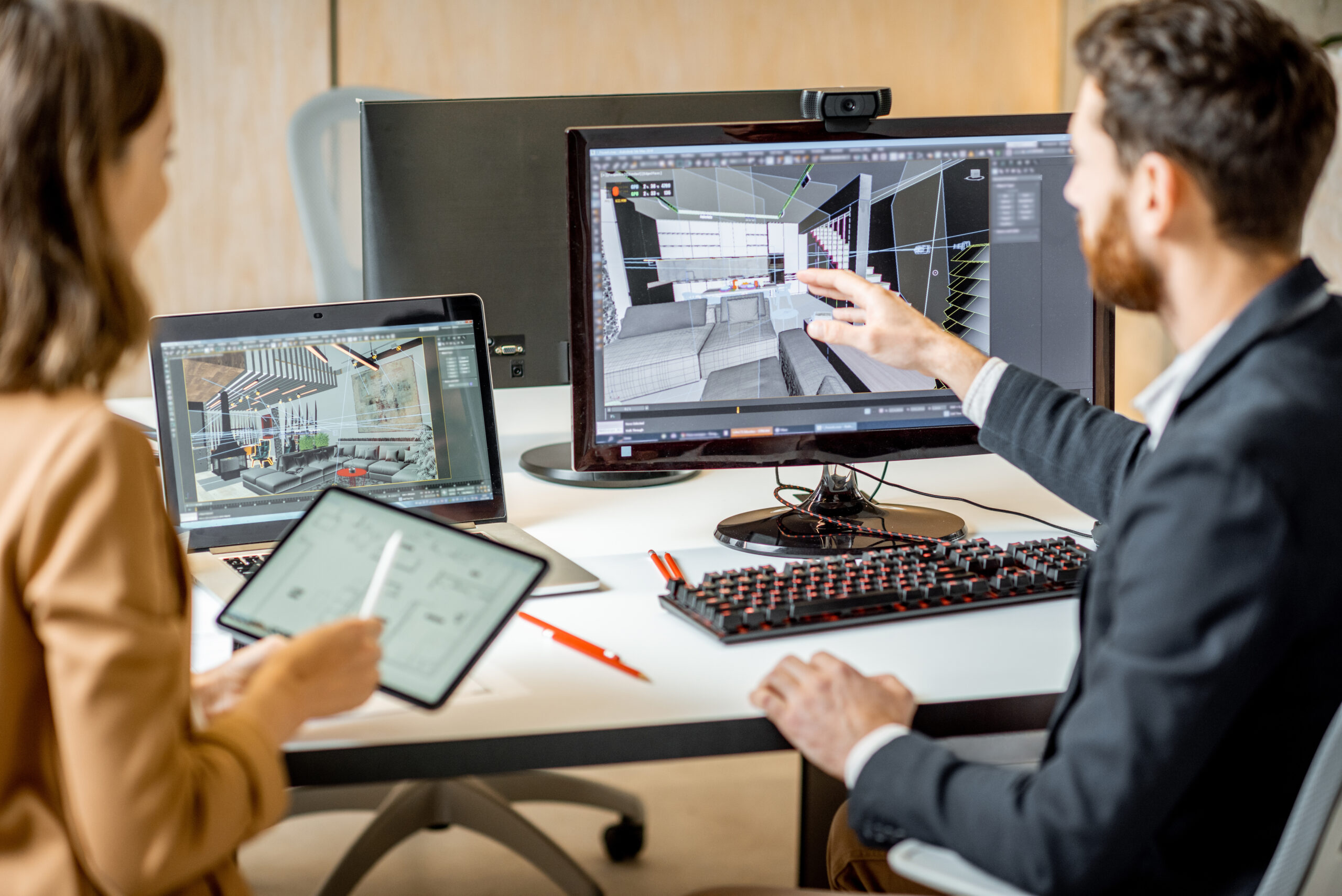Augmented reality and virtual reality experiences are transforming the way businesses are interacting with their customers, potential customers, and even their employees. From retail stores to advertisers to the automotive industry, organizations are harnessing the power of AR and VR to boost efficiency, try new ideas, and train their workforce..
But the thought of using these visual communication technologies can seem daunting. Are they right for your business? Are they worth the investment? And what’s the most effective way to use them?.
Here are five ways businesses are already using AR and VR
1. Designing new products. Imagine designing a whole new car. There are countless considerations at play: You want to achieve style and innovation without detracting from functionality. AR or VR can ease this process, allowing you to visualize the car’s different features before you actually commit to building a model. In fact, the automotive industry is using AR already for exactly this purpose. You don’t have to be designing cars to see the advantages here. Any new product that’s expensive to demo can be more easy visualized and tested via AR or VR before you invest in next steps. 2. Helping consumers find the right product. One of the greatest challenges of online shopping is that you don’t know how that shirt will look on you, or whether that hutch will fit in your kitchen. These kinds of reservations prevent consumers from making a purchase. Businesses are working hard to solve this problem. AR can empower you to try on clothes, glasses, jewelry, and more by overlaying them onto an image of yourself. This can be done online or with the help of a smartphone camera. Likewise, you can test out a new couch in your den to make sure the size and color is right. While such technologies are great for online sales, brick-and-mortar stores can reap huge benefits too. Some MAC cosmetics stores are getting outfitted with AR mirrors that overlay different makeup styles and looks onto the customer’s face. It’s a quicker, easier way to try out a dramatic transformation — without the need to use the tester lipstick. 3. Improving efficiency. AR and VR can be hugely helpful in identifying efficiency improvements within your business operations. Car companies are testing the efficiency of their manufacturing process using AR systems. Meanwhile, they’re empowered to improve the safety and durability of their vehicles at the same time. Using VR to imagine and test new scenarios, processes, or workflows can afford a huge advantage to companies that feel these processes are slowing them down. The more scenarios you can test, the more likely you’ll be able to find the most efficient solution. 4. Marketing your company. Games such as Pokémon GO have been hugely successful in engaging consumers with branded AR experiences. Millions of businesses were able to promote themselves as real-world stops in the hunt for Pokémon. Some offered discounts and coupons for visitors, while others were just thrilled to get new customers in the door. But Pokémon GO isn’t the only game in town. In fact, some businesses are even creating their own scavenger hunt-style games or interactive experiences to drive new interactions. Advertisers are harnessing AR and VR ads that appear to consumers while they’re playing their favorite video games. Spending on AR advertising reached an estimated $12.8 billion in 2017. The great thing about AR is that it can be hyper-local, so if you’ve got a brick-and-mortar location and you want to reach people who are in your town or right down the street, it’s a great fit. 5. Training your employees. A stunning 40 percent of all employees who receive sub-par training actually leave their jobs within the first year. This means there’s a direct link between training and employee success and retention. VR and AR can help. Imagine, for instance, that you have a manufacturing operation where one mistake has the potential to shut down the line, or even injure employees. Trying out new skills virtually before they try them in the real world can save your employees a lot of anxiety, and save you a lot of time and money. AR can overlay key information onto virtual displays, increasing retention and also speeding up their progress. In one test case, smart glasses made by Skylight aided a technician in wiring a wind turbine. Since he didn’t have to look back and forth from the paper manual to the machine, he was able to complete the job 34 percent faster, although he had never used the smart glasses before. If one of these five uses feels like a great fit for your business, it’s time to take the next steps in investigating what AR and VR can do for you.


